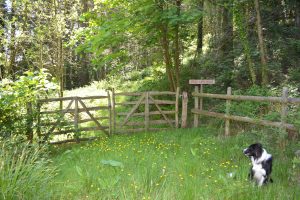Tree Planting FAQs
If you've read 'Why buy tree planting land?' and you want to know more, here are answers to some of your most common questions:
Who is able to grow their own woodland?
The main requirement for planting trees enthusiasm! Be it individuals, families, groups of friends, schools, universities, community groups, faith organisations or corporate companies, the benefits of creating a woodland are open to everyone. There is no requirement for prior experience; all the skills you need can be acquired on the job. A can-do attitude and a willingness to learn about nature is all you need.
Do I need to plant the trees myself?

Whether or not you physically plant the trees yourself is entirely up to you. Venturing out with a spade and a bag full of whips can be a rewarding experience, enabling you to get involved from the very beginning. Equally, we can recommend tree-planting contractors anywhere in the UK who can help you with tree planting if that would be more suitable. They will be able to guide you in choosing tree species and carrying out the planting work.
What species of trees should I plant?
This is very much up to you. One of the attractions of planting a woodland from scratch is the opportunity to curate your own woodland with a particular character. This can be achieved through both selecting which species you plant and where you plant them. You may also wish to consider adding other features as you plan your landscape, such as ponds or clearings, which can complement the natural topography of your land. Trees that you may consider for your woodland include:

Deciduous trees, such as: Alder, Ash, Beech, Birch, Elm, Oak or Willow
Coniferous trees, such as: Cedar, Larch, Pine, Spruce or Yew
Fruit trees, such as: Apple, Cherry, Mulberry, Pear or Plum
How expensive is it to plant trees?
The standard planting density for trees is 800 per acre. Whips cost about 20p - 60p, depending on the species and volume purchased, making tree planting relatively inexpensive. This means you will be looking at a cost of around £500 per acre if you plant yourself. If you use a specialist contractor, there is the additional cost of paying for labour.
How much ongoing management does a new woodland require?

Mother nature, left to her own devices, will do much to look after your woodland for you! Over time the woodland will find its own natural balance as the young trees compete for light, meaning some trees will survive and flourish whilst others won’t. The amount of time you want to dedicate to managing the woodland is down to you: some owners take a more hands-on approach, carefully managing the ecosystem through coppicing and maintaining open areas like rides, whilst others prefer to let their woods develop more naturally.
Is the ground ready for tree planting immediately?
Yes. Unlike using arable farmland to grow crops where careful management of the soil is often advisable, trees are able to take root and flourish in a range of ground types. In fact, from an environmental perspective it might be seen as irresponsible to grow a woodland on highly productive land, as it would be better served producing food. We ensure that the land we sell for tree planting is appropriate for the cause.
How long before it ‘feels’ like a woodland?
This is one of the most common questions, and people are often pleasantly surprised by the answer. A young woodland will ‘feel’ like a woodland once the trees have grown above head height, meaning you can no longer look over the top of it. The length of time this takes will be impacted by species and the availability of water and sunlight, but on average will take between 3 to 5 years. With a species like willow, this could be considerably faster, even just one year. A vibrant dynamic woodland can grow much faster than people often assume. Here are the usual growth rates for some common species:

Alder: 60cm a year (3 years to head height)
Beech: 30cm - 60cm a year (3 - 6 years to reach head height
Birch: 40cm a year (4 - 5 years to reach head height)
Willow: 100cm a year (1 - 2 years to reach head height)
How would I access my tree planting land?
All land that we sell comes with an access road or track which is suitable for a car, unless otherwise specified. We also ensure that land is fenced off, or demarcated using natural features or stakes, meaning the boundaries of your land is clear to both you and your new neighbours.
For more information about tree planting, please visit our 'Why buy tree planting land' page here.
-
